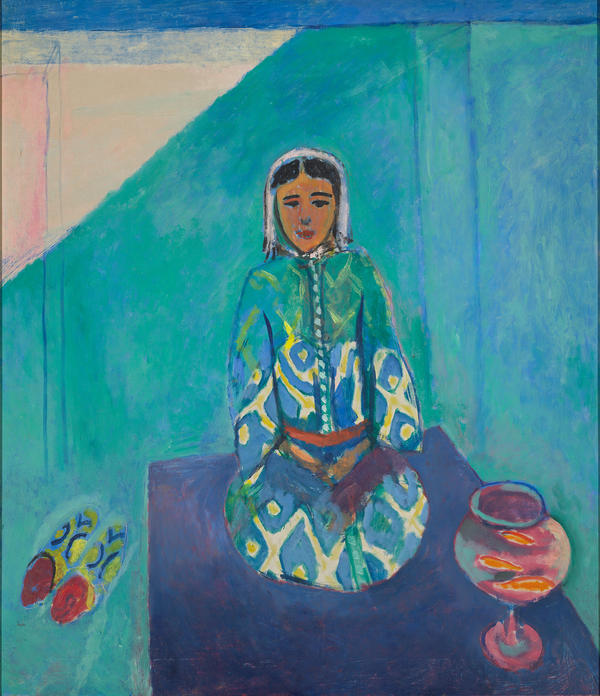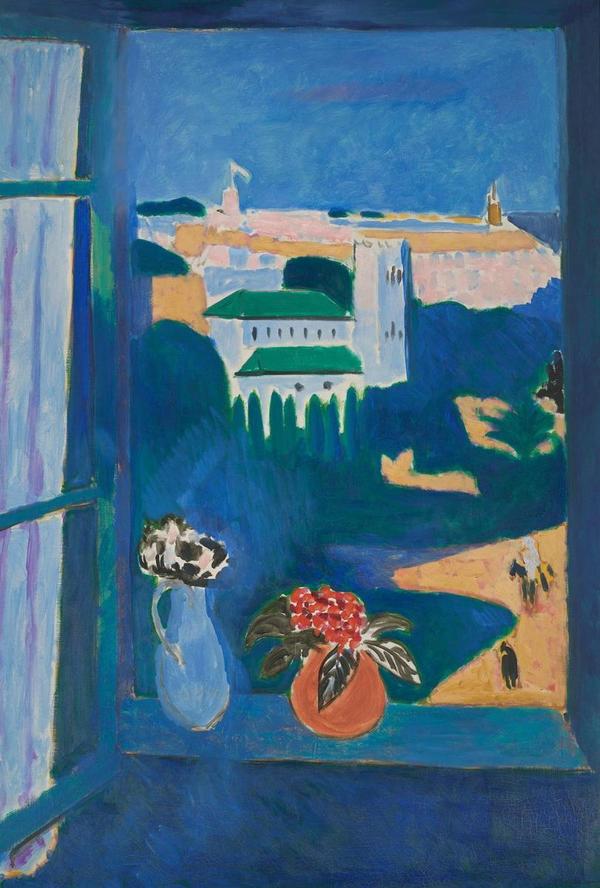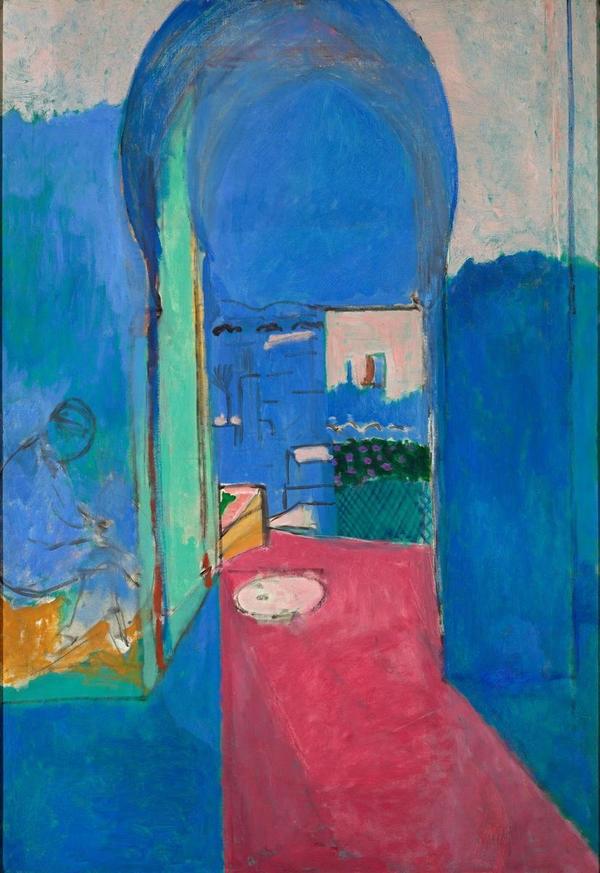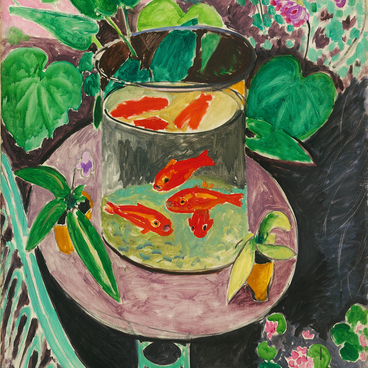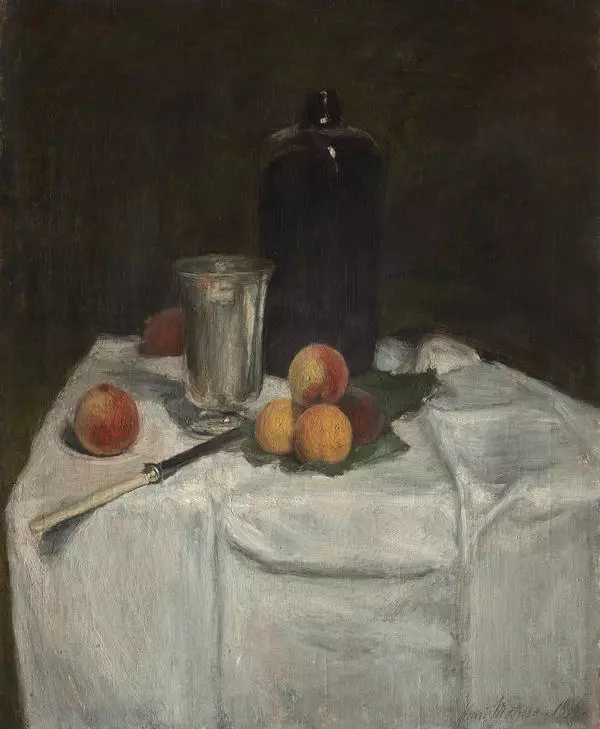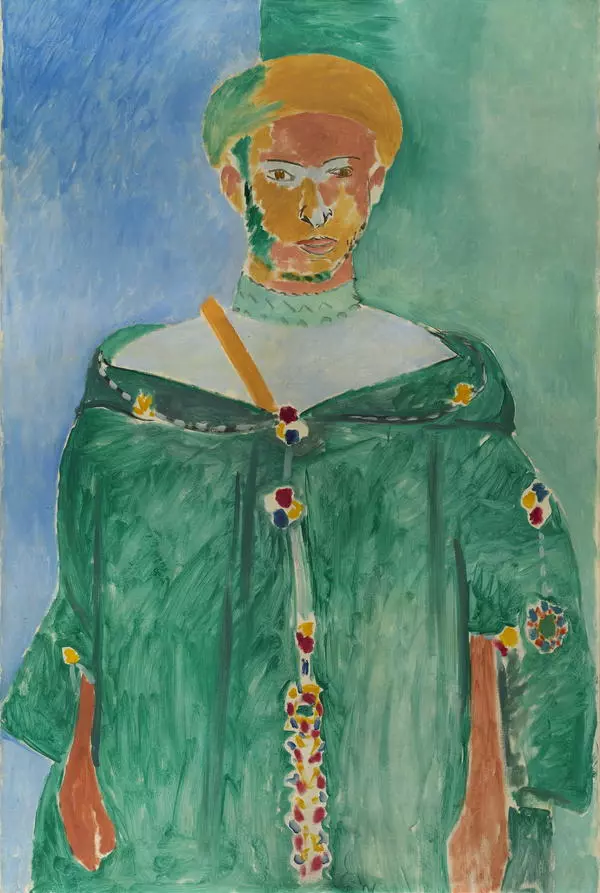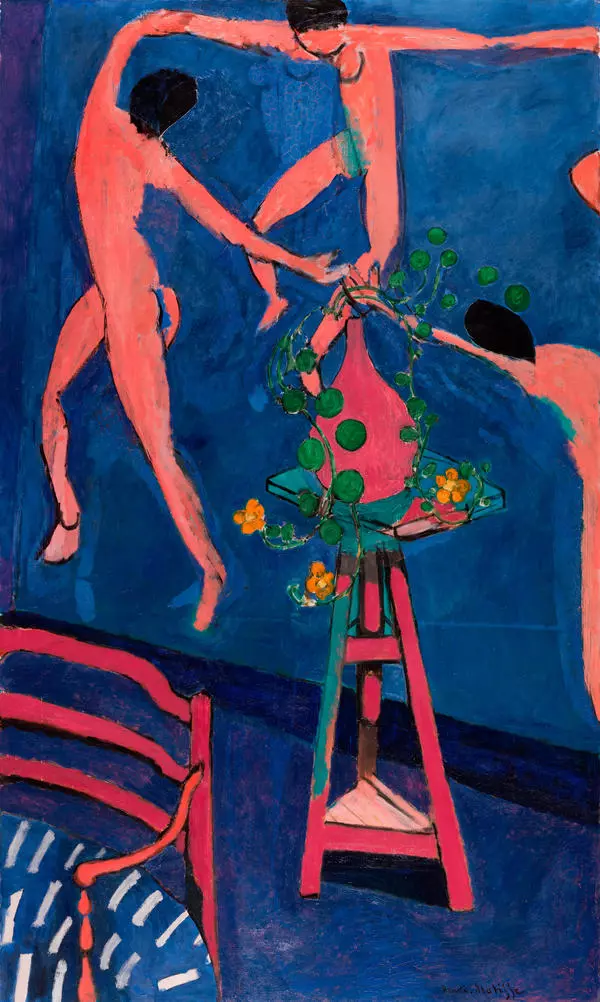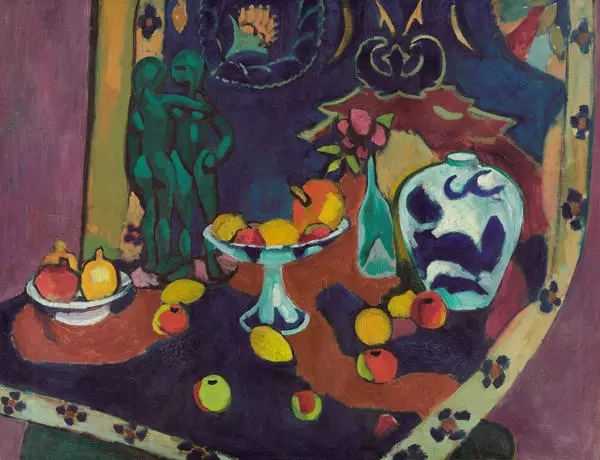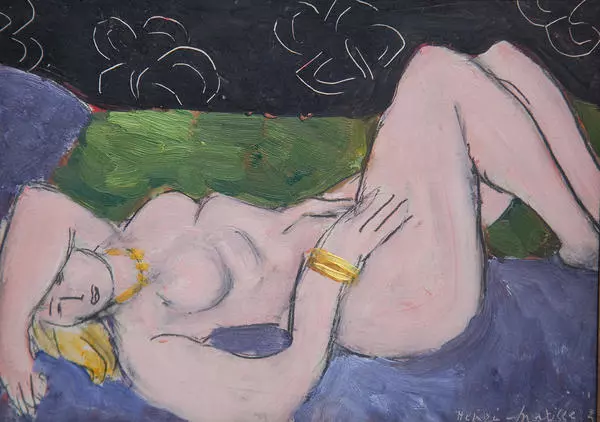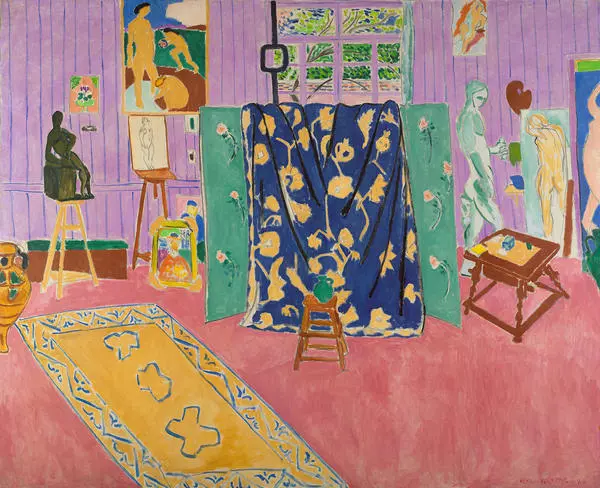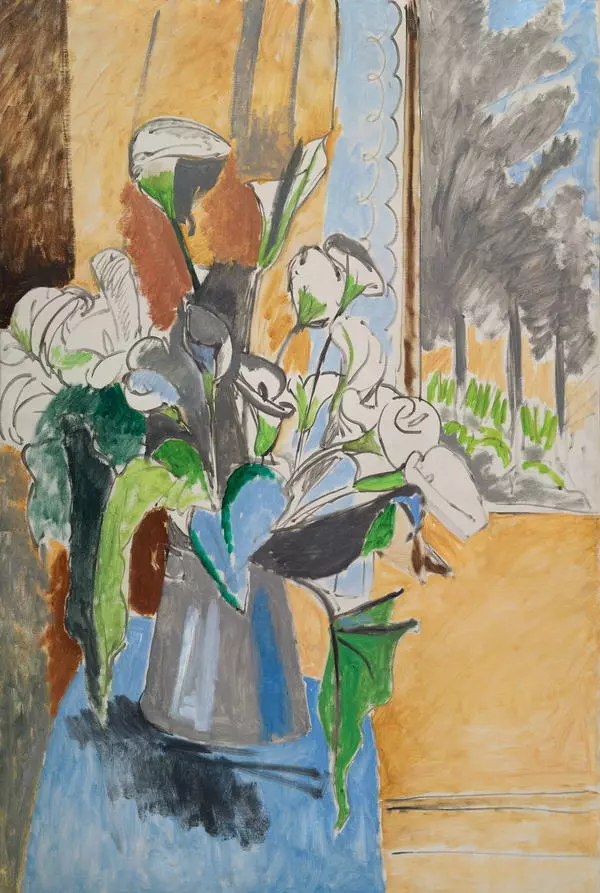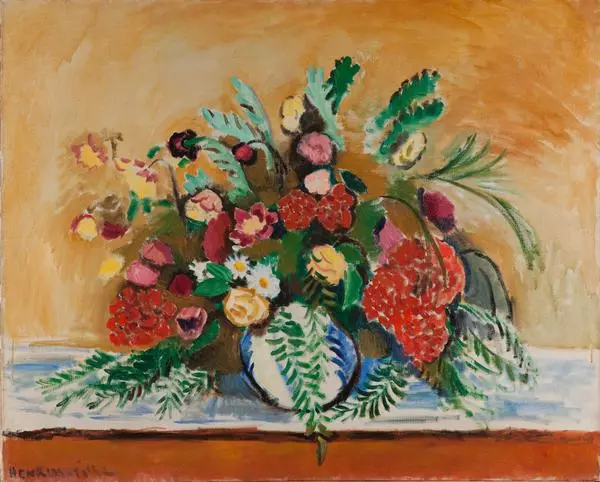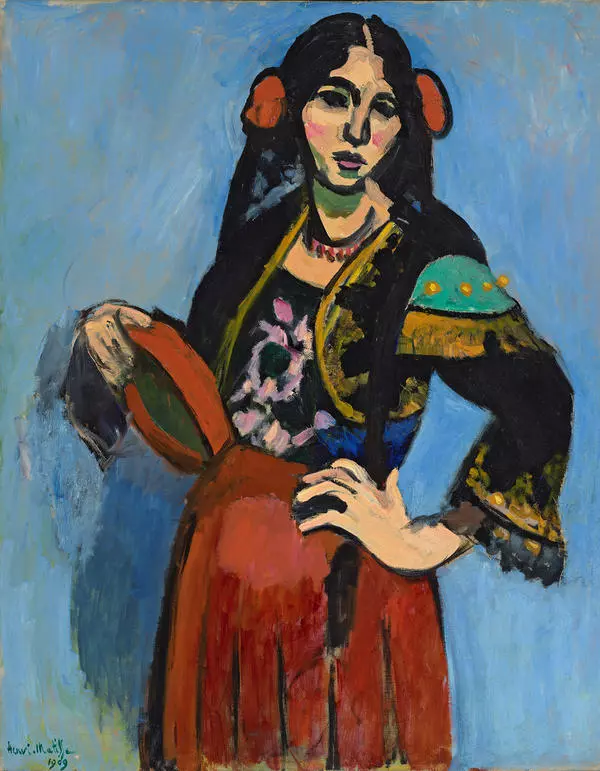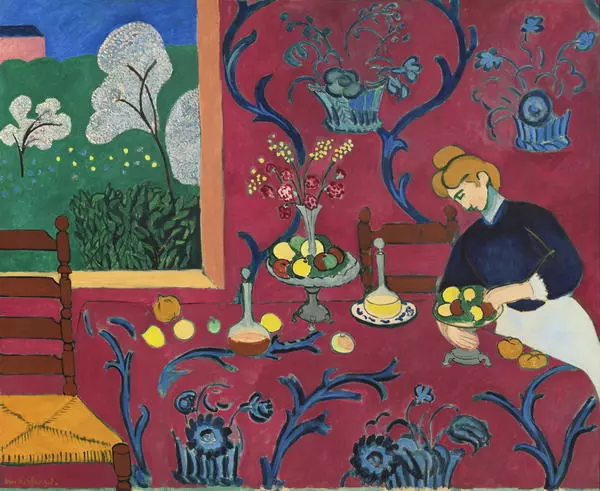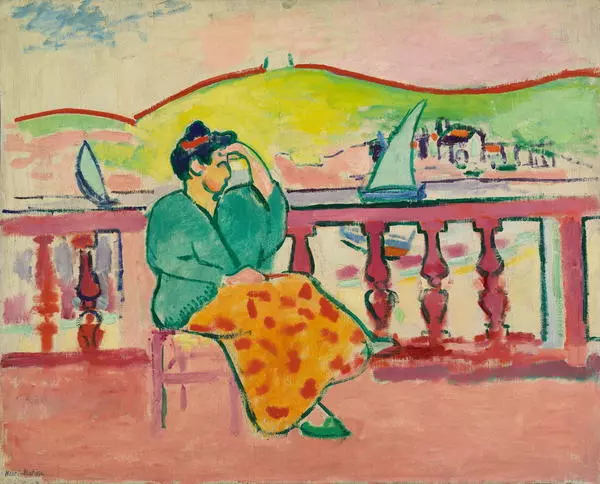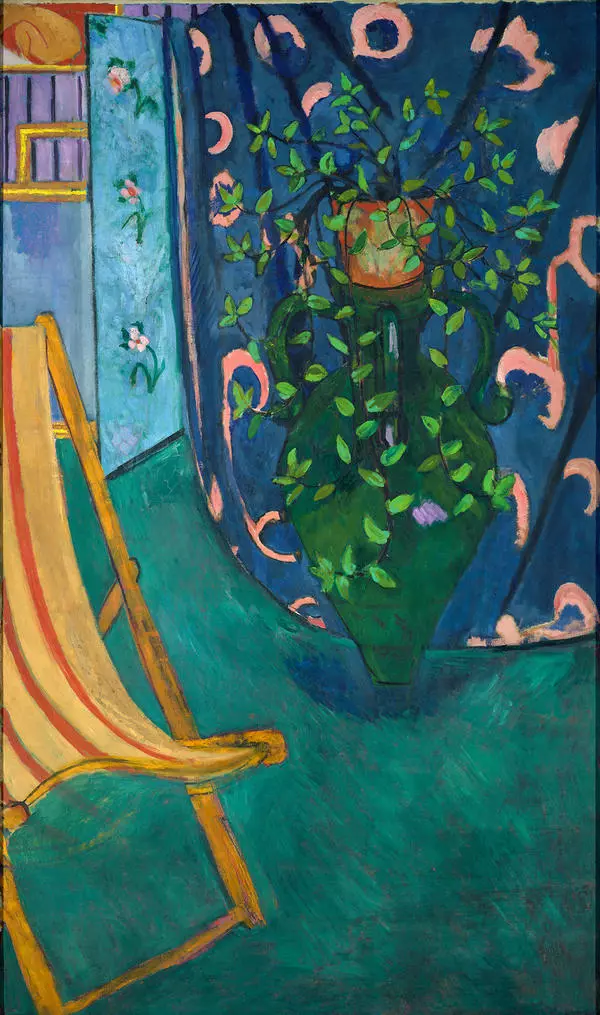A journey to Morocco in 1912–1913 helped the artist unlock new potential in his color palette research. Later, Matisse confessed that his exploration of the Arabic East made him reject fauvism and establish new relations with nature. The Moroccan Triptych was painted in this period. It consists of the art works ‘Landscape Viewed from a Window. Tangier, " “Zorah on the Terrace, " and “The Casbah Gate”. Unlike his early paintings, where his interest in Oriental art showed in fancy shapes borrowed from Arabic applied art, in this triptych Matisse makes an attempt to render the atmosphere of the contemplative, languid, almost dreamlike daily life in the Arabic world. The triptych can be interpreted as a generalized, philosophical image of the Arabic East and also as a metaphor of day: “morning, " “afternoon, " and “night.” Blue is used as an integrating color in each part of the triptych differently. In the Landscape Viewed from a Window. Tangier, the downtown of an old Arabic town is shown with the Anglican St. Paul’s Cathedral. Matisse renders the southern morning sky in blue and uses the same for the deep shadows cast by trees and the coolness of the interior. The blue color penetrates all of the details, making the main motif more poetic and showing the spicy atmosphere of the East.
The middle part of the triptych, Zorah on the Terrace, is dominated by the emerald-blue that transforms this piece into a fantastic mirage. Zorah, a Moroccan woman sitting on a carpet, seems to be floating in a surreal flickering environment. The emerald-blue mirage absorbs even the lines. The joints between the floor and walls disappear, which makes the whole interior look like a miraculous projection. The feeling of delightful comfort and serenity prevails in the painting’s atmosphere, and the real and the surreal flow together; perhaps this is why the babouches standing to the side look like a pair of fish in a bowl.
The middle part of the triptych, Zorah on the Terrace, is dominated by the emerald-blue that transforms this piece into a fantastic mirage. Zorah, a Moroccan woman sitting on a carpet, seems to be floating in a surreal flickering environment. The emerald-blue mirage absorbs even the lines. The joints between the floor and walls disappear, which makes the whole interior look like a miraculous projection. The feeling of delightful comfort and serenity prevails in the painting’s atmosphere, and the real and the surreal flow together; perhaps this is why the babouches standing to the side look like a pair of fish in a bowl.

